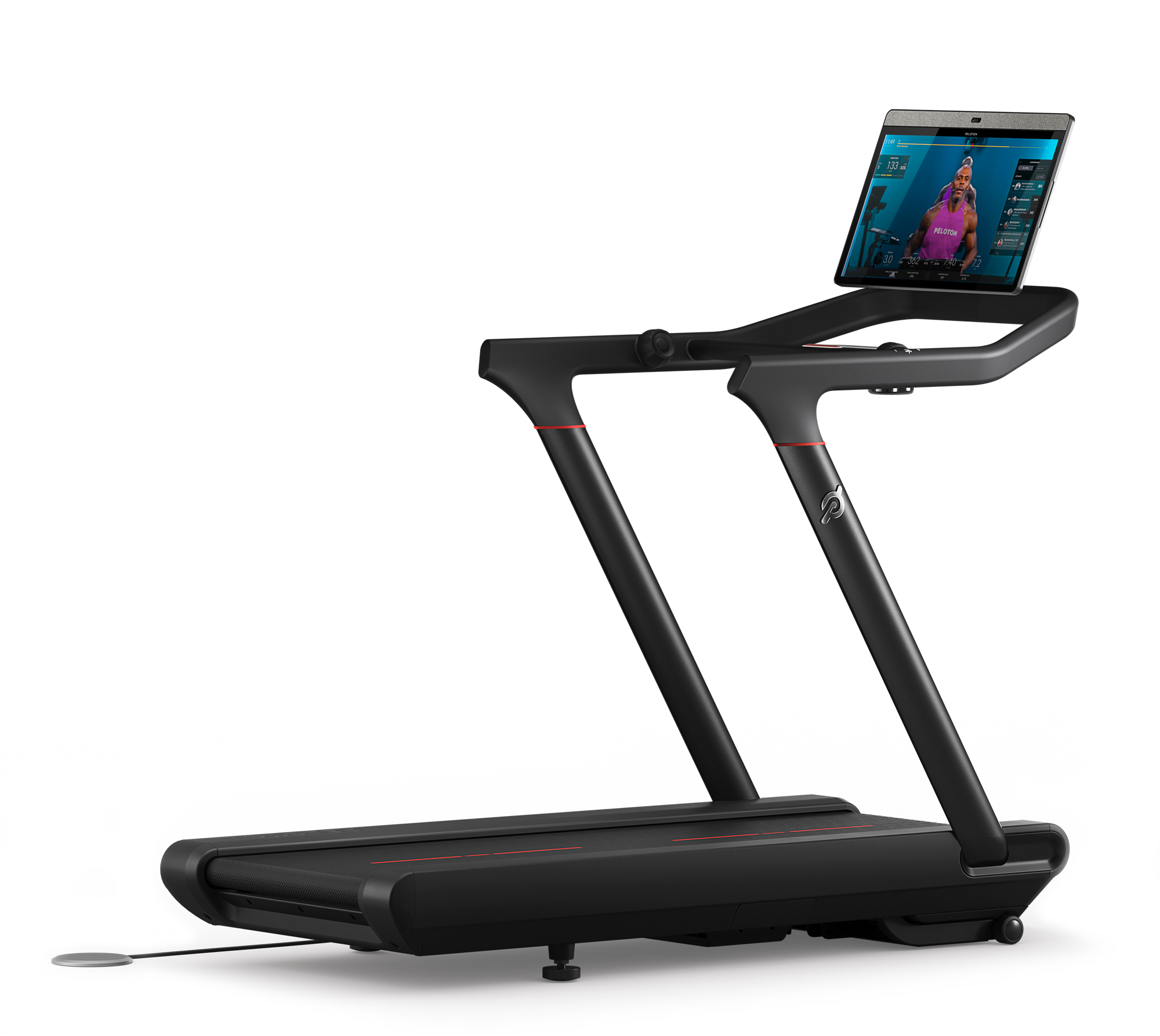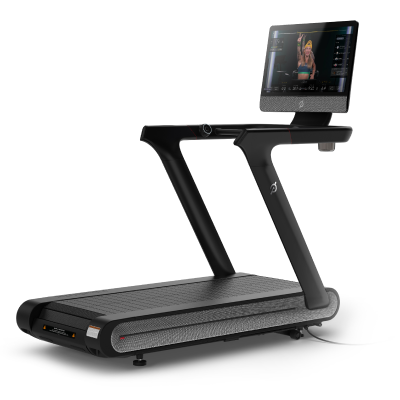
Maskot/DigitalVision via Getty Images
Everyone Needs to Do Cardio. Here’s How to Love Having It In Your Routine
Expert tips on how to find cardio you crave.
By Lauren Mazzo•
All of the Amazing Benefits of Cardio
What Is Actually Considered Cardio Exercise?
Types of Cardio
The Best Cardio Exercises to Add to Your Routine
How to Add Cardio to Your Fitness Routine
Peloton Cardio Workouts
It’s very possible that you have a negative gut reaction to the idea of cardio exercise. Perhaps you came of a gym-going age when cardio was equivalent to doing 100 burpees or slogging away an hour on the elliptical, or you’ve just learned to love weightlifting over the years. But cardio doesn’t have to be miserable—heck, it doesn’t even need to be done in a gym—and the benefits are just too good to pass up.
“When I'm in a healthy cardio streak, I really feel it,” says Peloton instructor Tunde Oyeneyin. “My everyday is better. Overall, I feel more energized and just at a peak place mentally.”
How do you start adding more cardio (aka aerobic exercise) to your routine? What “counts” as cardio, and how much do you really need? Whether you’re new to working out or just neglect to get your cardio minutes in, we have expert tips to help. Here’s how to turn cardio into something you don't just tolerate but actually enjoy.
All of the Amazing Benefits of Cardio
Any type of movement is invaluable for your mental and physical health, but aerobic exercise has something special—there are almost too many benefits of cardio to count. Here are some of the heavy-hitting perks of cardio exercise that warrant making it a part of your routine.
Better Heart Health
One of the most significant benefits of cardio is that it elicits positive adaptations to your VO2 max—the maximum amount of oxygen you can utilize during exercise and a valuable marker of cardiovascular fitness, and a key indicator of longevity. “That’s important because VO2 max is probably the best single predictor of heart function,” says Fabio Comana, MS, faculty instructor at San Diego State University and the National Academy of Sports Medicine (NASM). “In terms of cardiovascular disease (CVD) and keeping a healthy heart, the primary thing is to keep and maintain a very healthy VO2 max score, and that's something that gets better with cardio,” he says. Indeed, research published in the Journal of the American Heart Association shows that cardio exercise reduces your risk of CVD, CVD mortality, and total mortality, and is associated with healthier cholesterol levels.
Stronger Lungs
Improved pulmonary (lung) function is also a major perk of cardio exercise, Comana says. Cardio exercise breeds both pulmonary endurance and power, improving the efficiency of your breathing system. More efficient lungs let you scream, sing, and climb stairs with less huffing and puffing, but it also impacts long-term lung health. One study published in the American Journal of Respiratory and Critical Care Medicine tested the cardiorespiratory fitness of more than 3,000 young adults and then followed up with another test 20 years later; they found that people who did the best job at preserving their cardio fitness over time experienced the smallest reduction in lung health as they aged. Interestingly, even among cigarette smokers (who are at the highest risk for loss of lung function and future lung disease), preserving fitness levels over the 20 years helped reduce declines in lung health.
Reduced Disease Risk
In addition to lowering cardiovascular disease risk, cardio exercise may help reduce systemic inflammation (which is linked to many chronic diseases) and improve glucose intolerance and insulin resistance (two key factors that increase diabetes risk). Several studies have also linked better cardiovascular fitness with reduced risk of cancer and cancer mortality. Finally, when you perform weight-bearing cardio exercises like walking, running, hiking, dancing, or stair climbing, you help improve bone health and reduce your osteoporosis risk, according to the National Institute of Health (NIH).
Improved Muscular Endurance
Even if you’re not training with your muscles in mind, cardio exercise can help improve your muscular endurance—your muscles’ ability to work for an extended period. “I notice that the more cardio I'm doing, the better strength workouts I have,” Tunde says. “Over time, cardio can enhance muscle endurance, aiding in longer and tougher weight lifting sessions.” This endurance will help you fight fatigue during workouts and other physical activities, like shoveling snow or playing soccer, but it also helps you in your day-to-day, like maintaining proper posture for hours at your desk or walking all day on vacation.
Boosted Brain Function and Mental Health
That feel-good mood boost you get from a quick run or cycling class is no small thing. Exercise is associated with a significantly lower risk of depression and has been shown to improve anxiety and cognitive functioning. “There are these compounds—including brain-derived neurotrophic factor (BDNF) and a vegetative endothelial growth factor—manufactured in the brain as a result of exercise that are wonderful for maintaining a healthy brain,” Comana says. Cardio exercise improves the efficiency of the blood-brain barrier, he explains, meaning it does a better job of regulating what’s going into the brain. “As a result, it creates more balanced neurotransmitter levels in the brain, and that has positive repercussions on your mood, anxiety, attentional focus, all these different types of things,” he says.
What Is Actually Considered Cardio Exercise?
If you’re evaluating your current cardio routine and needs, you’re probably wondering what, exactly, “counts” as cardio. Is strolling with your dog enough? How about your walking-heavy commute to the office? Is hot yoga cardio if it gets you sweating?
“Almost anything, even walking, can qualify as cardio,” Comana says. “It’s any movement that elicits a little bit of a heart rate increase and is going to prompt your body to become more efficient in some capacity.”
That’s the key. For an activity to truly qualify as a cardio workout, it needs to make you breathe harder and get your heart beating faster, according to the Centers for Disease Control and Prevention (CDC). A lot can do that—from walking up a flight of stairs to playing with your kid—but it needs to at least moderate intensity to count towards your aerobic exercise goals for the week. A straightforward way to know if you’re working out at a moderate intensity is if you can talk but not sing, per the CDC. If you wear a smartwatch or other heart rate monitor, you can also use your heart rate to gauge your intensity. Moderate-intensity exercise should place you between 50-70 percent of your maximum heart rate (or HR max, which you can estimate by calculating 220 minus your age), according to the American Heart Association (AHA).
All that said, both Tunde and Comana are quick to point out that any movement is better than nothing—and you still benefit from exercise that doesn’t fit this specific definition of cardio. “Low-intensity cardio (which is also effective) can be done in as little as five minutes,” Tunde says. It’s a myth that you need to do cardio for an extended time to get the benefits or see results.
Types of Cardio
Aside from the activity you’re doing (say, swimming, biking, or running), the main difference between types of cardio is the intensity you’re working at and whether or not it changes much within your workout sessions. “There are so many different ways to do cardio, but it really comes down to heart rate training zones,” Comana says. “The science around zone methodology is based on the idea that at certain intensities, you get specific adaptations.” The zones range from 1 to 5, based on heart rate or rate of perceived exertion (RPE), with 1 being the lowest intensity and 5 being maximal effort.
And before you even ask, no one zone or type of cardio is necessarily better than the other. “They all have benefits, depending on your goals,” Comana says—and the best program will include all of them. Here’s a breakdown of four main types of cardio and how training zones come into play.
LISS (Low-Intensity Steady State)
You could call LISS, or low-intensity steady state, the classic form of cardio; you’re working at a low to moderate intensity and maintaining a stable effort and heart rate throughout the session. Think: Going for a two-mile run at a steady, relaxed pace or hopping on a bike and pedaling at about the same effort for 40 minutes. You’ll likely be working in zone 2—with an RPE of 2-4 out of 10 or about 60 to 70 percent of your max heart rate. LISS helps build endurance, can help you recover from tougher workouts, and is particularly accessible for beginners or those coming back to exercise after a break.
LIIT (Low-intensity Interval Training)
LIIT, or low-intensity interval training, is when you alternate low- to moderate-intensity efforts with rest intervals that allow you to recover between pushes. For example, this could mean alternating walk/jog intervals or doing a low-impact ride that coaches you through a hill or faster cadence but doesn’t take you above zone 2 or zone 3 (RPE of 5-6 out of 10, or 70 to 80 percent of your HR max). LISS is a great way to add variety to your workout and experiment with harder pushes without edging into high-intensity territory.
MISS or HISS (Moderate- or High-Intensity Steady State)
If you’re doing steady-state exercise, maintaining a pretty solid and consistent effort, but pushing yourself harder than zone 2, your cardio workout likely falls under the umbrella of moderate- or high-intensity steady state. This might look like a tempo run, where you’re maintaining a slightly challenging pace or a metabolic conditioning or dance cardio workout that keeps you working hard without much recovery time between pushes. In this type of cardio, your heart rate will remain elevated, sticking around zone 3 or zone 4 (RPE of 7-8 out of 10, or 80 to 90 percent of your HR max). Any cardio in this bucket will certainly count towards your weekly quota and serve up substantial heart-health benefits.
HIIT (High-Intensity Interval Training)
You’ve no doubt heard of HIIT, or high-intensity interval training. This cardio method involves pushing yourself into the area of vigorous-intensity exercise—zone 4 and zone 5 (RPE of 9-10 out of 10, or 90 to 100 percent of your HR max)—for short bursts, and alternating those with recovery intervals that allow your heart rate to fall back down to lower levels. There are serious benefits to HIIT, including the fact that you can keep your workouts quick and efficient, but too much can lead to overtraining or burnout, Comana notes.
Try Peloton Cardio Classes
See all classesThe Best Cardio Exercises to Add to Your Routine
Need some ideas on where to start? Give any of these cardio exercises a try.
Beginner Cardio Exercises
Walking, cycling, swimming, and aerobics are some of the best cardio exercises for beginners, since they can be low-impact and low-intensity. As you progress, you can increase the challenge by going faster, resting less, or increasing the difficulty.
Steady State Cardio Exercises
Some of the best steady-state cardio exercises involve repetitive movements at a controlled pace—things like running, hiking, cycling, swimming, rowing, and stair climbing. However, if your effort is staying relatively stable, activities like tennis, line dancing, circuit training, and ice or roller skating can totally qualify as steady-state cardio, too.
HIIT Cardio Exercises
You can turn almost anything into HIIT if you push yourself by increasing the difficulty or pushing your pace. The key to HIIT is to get into zones 4 and 5 and then let yourself recover. For example, you can do HIIT cardio workouts with challenging bodyweight moves like plyometrics, sprint workouts, or on a rower or stationary bike. HIIT cardio workouts can involve various interval frameworks, including AMRAP, EMOM, and Tabata.
How to Add Cardio to Your Fitness Routine
Adding more cardio to your routine can be as simple as tacking on a 10-minute dance workout to the end of your strength sessions or committing to playing pickleball with a friend each week. Here’s how much you should ideally be getting and how to squeeze it in.
How Much Cardio You Need Each Week
The CDC officially recommends that adults aim to get at least 150 minutes of moderate-intensity activity, 75 minutes of vigorous-intensity activity, or an equivalent combination each week. For example, this could mean 30 minutes of moderate-intensity physical activity five days a week or vigorous-intensity aerobic activity for a minimum of 25 minutes three days per week.
1. Ramp Up Slowly
Comana cautions against going from zero to 100, especially if you’re returning to movement after a hiatus or starting up for the first time. Start with low-intensity and shorter bouts of exercise—5, 10, or 15 minutes—and build up slowly from there until you meet that 150-minute recommendation, making sure to take rest days between sessions. Try going for a short walk three times this week or cue up one of Peloton’s 10-minute Low-Impact Cardio classes.
2. Commit To a Plan
It can help to have a workout plan—whether for the week, month, or next six months—to help take the guesswork out of your routine. And even though we’re singing the praises of cardio here, you want to include some strength work, too; in addition to their cardio recs, the CDC also says adults should engage in at least two days of muscle-strengthening activities per week. “You want to perform one with the intention of benefiting the other,” Tunde says. “The order of your workouts can help you reach your goals as well as a consistent schedule, making sure you incorporate both cardio and strength training.”
3. Find Something You Love
Discovering a workout you love can make all the difference in helping you stick with it and meet that cardio quota week after week. “Find what you enjoy doing and do it,” Tunde says. “Start moving your body and see where it takes you.” Don’t be afraid to think outside the box—or the gym. “I love salsa dancing,” Tunde says. “Believe it or not, it probably makes me sweat the most!” If learning TikTok dances gets you breathless, that does the trick—as does chasing after your dog or playing after-work soccer.
4. Add Variation
As Comana mentioned above, no one type of cardio is best; you’re better off including a variety in your routine to get all the different benefits each type has to offer. “To avoid overtraining, to avoid redundancy, to avoid boredom, I like to say mix them up,” he says. “It’s best to have a program that undulates between the zones.”
5. Don’t Be Afraid to Roll With the Changes
Just because you commit to a plan doesn’t mean you need to stick with it for life—or that, if you miss a couple of days or weeks, your affair with cardio is over. Allow your routine to change with the seasons, your goals, or what’s sparking joy for you right now. Take it from Tunde: “Every week looks different for me,” she says. “I get cycling in when teaching my classes, which can range between five minutes to an hour, five to twenty times a week. Then outside of work, I love going for runs, whether it's around Brooklyn or on the Peloton Tread…For example, if I'm training for a marathon, ‘time on feet’ matters. Depending on what my goals are at the time, I'll carve out more or less time during the week for it.”
Peloton Cardio Workouts
The beauty of cardio is that there are so many different ways to get it done. On Peloton alone, there are more than a dozen types of cardio workouts to try, including treadmill runs, walks, and hikes; cycling classes; rowing classes; outdoor audio-only runs and walks; dance cardio; HIIT; shadowboxing; and more.
To make your life even easier, try Peloton’s personalized weekly workout plan feature; you can plug in your needs, and it’ll map out your week for you, including a variety of types of cardio, enough strength work, and time for recovery. You might find that you look forward to Tunde’s HIIT & Hills rides so much that you don’t even mind the burn.

Peloton App
Access thousands of classes with no equipment needed.
This content is for informational and educational purposes only and does not constitute individualized advice. It is not intended to replace professional medical evaluation, diagnosis, or treatment. Seek the advice of your physician for questions you may have regarding your health or a medical condition. If you are having a medical emergency, call your physician or 911 immediately.
Our Products
Level up your inbox.
Subscribe for a weekly dose of fitness, plus the latest promos, launches, and events.
By providing your email address, you agree to receive marketing communications from Peloton.
For more about how we use your information, see our Privacy Policy.











